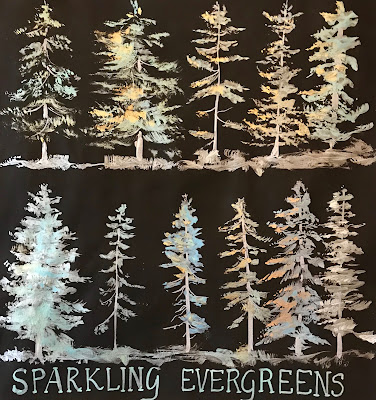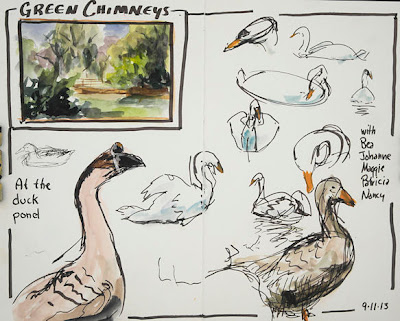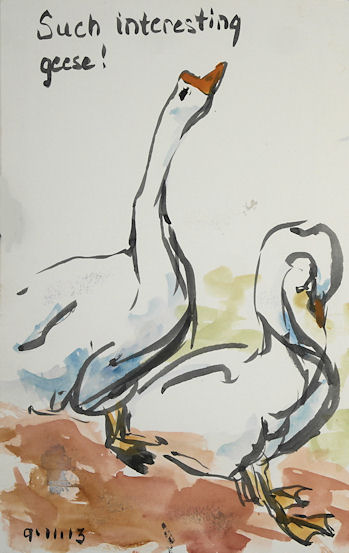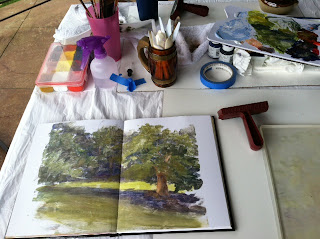There's been a lot of buzz out there lately about the new Gelli Printing Plates, which enable artists to use traditional acrylics to create monoprints inexpensively, and without a press. I had to get on board that train! I ordered the largest size available, which is 12x14". As soon as it arrived, I dove in. My goals were to create textured backgrounds for artwork using monoprinting techniques, as well as traditional painting on the plate to directly monoprint a work of art.
I spent a couple of days creating all sorts of effects and exploring techniques. I used brayers, squeegees, textured surfaces of all kinds, stiff and soft paintbrushes, fingers, paper towels, Q tips, color shapers, put on paint and pulled out paint. I worked multiple layers on many different types of papers, and well as single-layer, brush-painted monoprints on good printing paper. I used fluid acrylics, Golden Open acrylics, and assorted mediums. I tried some interference paints, iridescent paints, and sprayers. Here are some of my more interesting results. (Believe me, with all that experimentation, there was a lot that wasn't worth sharing!)
I've always loved sketching on a prepared ground. I often pre-toned my sketchbook pages, or layered on textures using assorted tools. I've seen many YouTube videos where artists monoprinted the full sheets of paper, then made sketchbooks out of it to get the prepared grounds. Other videos and blog posts showed printing in a hardbound book, using one side of a page at a time. The problem with either of those methods is that the left and right sides are from different prints, so they don't match. I almost always work across the spread in my hardbound sketchbooks, so that approach was not going to work for me.
Stillman and Birn to the rescue! Because their hardbound sketchbooks are designed to open flat, I thought they might enable me to print right across the spread. I opened up the book and pressed it flat down against the printing plate. And guess what. It works! Furthermore, since I was printing the background and not painting it, I didn't have problems of paint running into the gutter of the book and discoloring other pages.
Above is an 11x17" page spread of an 8.5x11" Stillman and Birn hardbound Zeta book. (It's about four layers of prints.) These new smooth surface books with heavyweight paper are ideal for monoprinting. Who knew! These will be fabulous backgrounds to paint and sketch on now.
The Gelli plate yields a great ghost image too, so it's worthwhile to have paper ready to take the second image. I decided to see if the lighter weight Epsilon books would also print well. I broke one in to be sure the spreads would lie flat enough, and started alternating between the books. That way I could get the most from my colors and textures. Below is the Epsilon spread with the second printings of some of the colors. (I don't know why it's showing sideways, but if you click the image it will right itself and enlarge.)
Below is one of my personal favorites. It was done as two printings --- the first with diluted Cerulean Blue, and then a layer of Transparent Red Oxide mixed with a little Iridescent Copper. It has a very subtle sheen, which is not visible in the digital image.
This one also has iridescent paint, and a few layers:
I'm looking forward to working on these prepared pages soon!
Why the Gelli Printing Plates are made in sizes 6x6", 8x10" and 12x14", I'll probably never know. Paper is sized 8.5x11, 8.5x17, and 11x17, or in the fine art full size sheets of 22x30 (which quarters to 11x15, and 1/8 would be 7.5x11). Therefore, the Gelli Plate sizes do not allow full use of plate nor paper. This is why there are side stripes on some of these page spreads that I printed. I tried to make the best of it. I kind of like them, and I can use them for writing text. For some of the page spreads I printed all the way to one edge, allowing the print to overlap the gutter and leave me with about 3" of unprinted space on the opposite side. Then I could either print that space separately and use it as another graphic block, or I could use it for text to accompany whatever artwork I ended up doing across the spread. I didn't take photos of those yet, so I suppose those will make their debut once the artwork is done over the top of the backgrounds and they become finished pages. However, I wish I had the option of printing across the full two sketchbook pages, and I also wish the plate would accommodate the standard 1/4 sheet size of 11x15 when I use rag paper. The awkward 12x14 plate size misses the mark on both.
Click here to go to Part 2.












































.JPG)
.JPG)
.JPG)
.JPG)
.JPG)
.JPG)
.JPG)